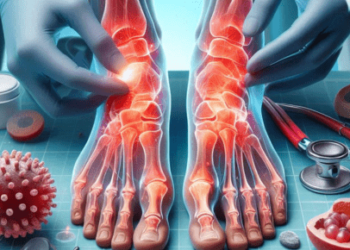
Over the years, the field of pelvic health therapy has been buzzing with transformative advancements that are reshaping how we address pelvic floor disorders. As practitioners and researchers strive to develop more precise diagnostic tools and effective treatment options, patients now have access to a range of therapies that were once unimaginable. This evolution not only marks a technological leap but also paves the way for more personalized and non-invasive therapeutic solutions.
In this blog post, we’ll explore the latest innovations in pelvic health therapy and discuss how they are enhancing patient care and quality of life. Read on!
Cutting-Edge Diagnostic Tools
Recent innovations in diagnostic tools have significantly improved the accuracy and efficiency of pelvic health assessments. Ultrasound imaging, for instance, has become a staple in evaluating pelvic floor functions, providing detailed visualization that aids in both diagnosis and treatment planning. Plus, the advent of electromyography (EMG) for pelvic floor assessment has allowed therapists to identify muscle activity and dysfunction with greater precision.
Non-Invasive Treatment Options
One notable advancement in pelvic health therapy is the development of non-invasive treatment techniques. Biofeedback therapy is gaining popularity by helping patients learn how to control their pelvic floor muscles through auditory and visual feedback. Transcutaneous electrical nerve stimulation (TENS) is another non-invasive option that uses low-voltage electrical currents to manage pain and enhance muscle function.
Innovations in Physical Therapy
Physical therapy remains a cornerstone of pelvic health treatment, and recent innovations have expanded its effectiveness. The use of virtual reality (VR) for guided pelvic floor exercises is a promising field, allowing patients to perform targeted exercises in an engaging and supportive environment.
Moreover, wearable devices that track muscle activity and provide real-time feedback are becoming increasingly common. These technologies empower patients to be more proactive in their therapy.
Pharmacological Developments
In the realm of medication, there have been significant advances too. New medications are being developed that target specific neurotransmitters involved in bladder control, offering relief for those with overactive bladder symptoms. Furthermore, research into hormone replacement therapies has shown potential benefits for post-menopausal women experiencing pelvic floor issues.
Surgical Innovations
For cases requiring surgical intervention, there have been groundbreaking techniques that minimize recovery time and enhance outcomes. Robotic-assisted surgeries afford greater precision, reducing the invasiveness of procedures. Sacral neuromodulation, involving the implantation of a small device to stimulate pelvic nerves, has also emerged as an effective treatment for chronic pelvic pain and urinary incontinence.
Personalized Therapy Approaches
A major trend in pelvic health therapy is the move toward personalized treatment plans. Tailoring therapy to the specific needs of the patient, based on comprehensive assessments and diagnostics, ensures more effective results. Personalized plans often incorporate a blend of physical therapy, lifestyle adjustments, and sometimes medication, crafted to fit the unique circumstances of each client.
The advancements in pelvic health therapy represent a notable leap forward in addressing pelvic floor disorders with a comprehensive approach that integrates innovative technology, effective non-invasive treatments, and personalized care strategies. These developments offer renewed optimism for patients, paving the way for improved management and quality of life.
If you’re experiencing pelvic floor issues, consider reaching out to a physical therapy clinic in your area, like Limitless Therapy and Wellness. Engaging with a qualified professional can provide guidance on the latest therapies that best suit your needs, helping you take that vital first step toward healing and wellness. Remember, early intervention and informed choices can significantly impact your recovery.













